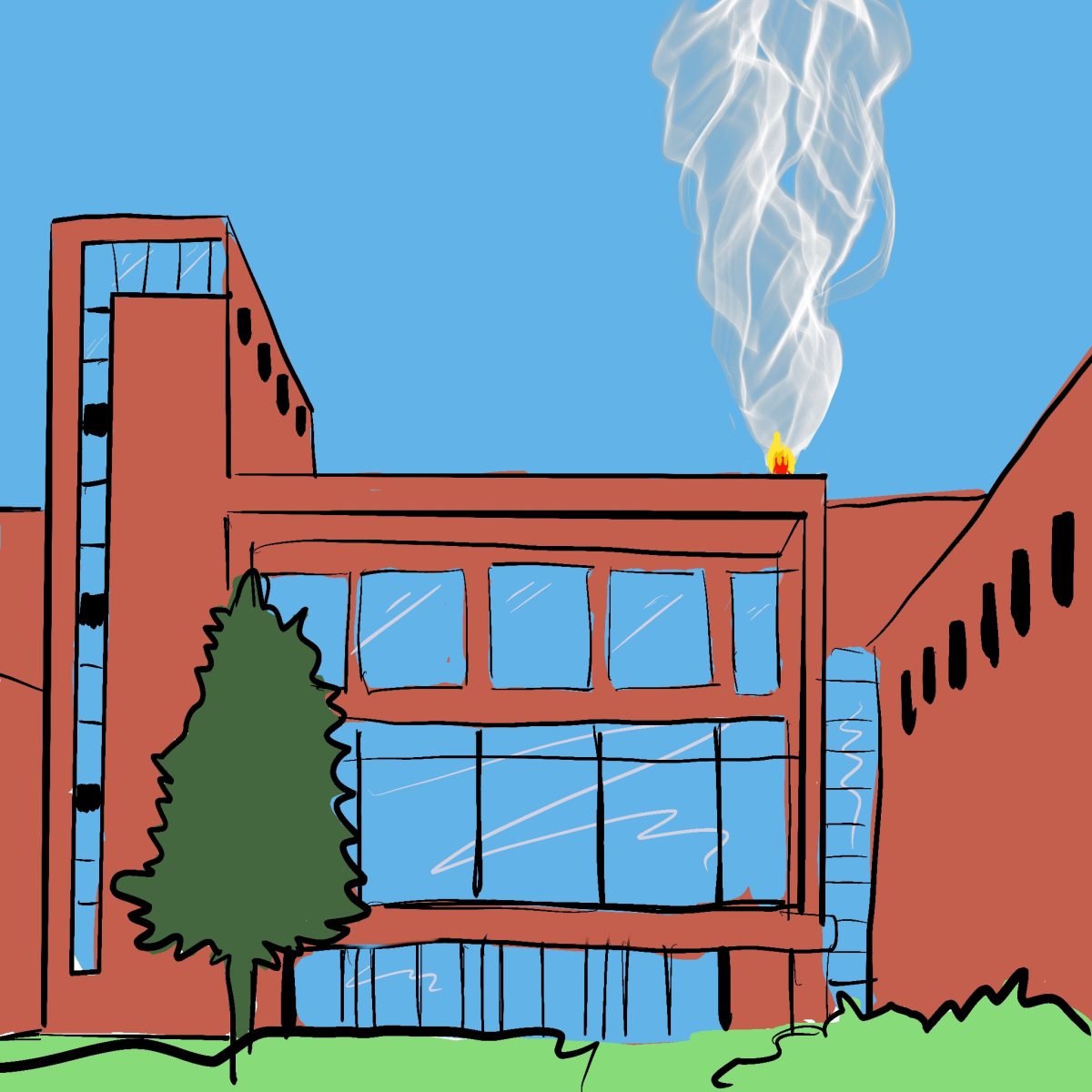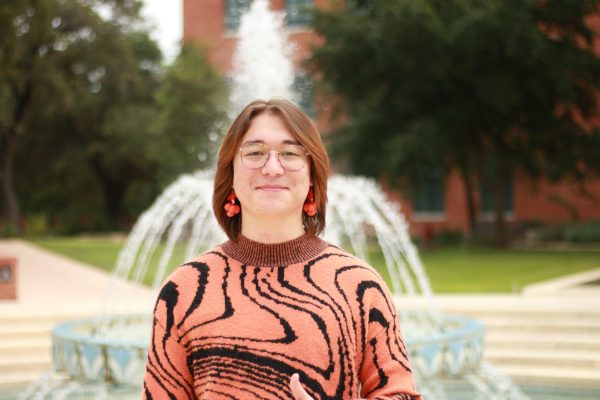On Thursday, Sept. 7, a group of students and staff were working in the Center for the Sciences and Innovation (CSI) Cube with a plastic injection molder, creating objects from recycled plastic. Residual wax in the machine over-pressurized and vaporized, making an audible explosion, and the vapor momentarily ignited.
The vapor from the wax spewed a particulate gas into the air, setting off the highly sensitive very early smoke detection apparatus (VESDA) system. As soon as the smoke alarms went off, everyone in CSI evacuated.
The Trinity University Police Department (TUPD) was on the scene within minutes to assess the location and threat level to students. It took 10 minutes for TUPD to reset the alarm. Leslie “Les” Bleamaster, the science facilities manager, noted that the evacuation lasted longer than usual.
“Because smoke had gotten into the innovation lab and wasn’t leaving that space, the alarm continued to go off. So we had to open the garage doors to get circulation and reset the alarms,” Bleamaster said.
The machine students were working on had been in use for 18-24 months. Going forward, there is a group of students analyzing potential to miniaturize the machine and establish regular safety tests. As a result, the group has added steps such as inspecting the chamber before use and are evaluating the results of not using wax with the injection mold.
Due to the large number of rooms and people in CSI at a given moment, people can’t check each room or office to ensure that people evacuate. Bleamaster emphasized the importance of students following evacuation procedures to ensure safety of students and staff in case of major accidents.
“If a fire alarm goes off, treat it as real and evacuate the building. Don’t just close the door to your office and keep working,” Bleamaster said.
During sudden evacuations, people tend to stay back and look for the evacuation source. Bleamaster added that for all evacuations, the rendezvous point for CSI is the Magic Stones.
“Don’t linger between the two buildings because if it is a big fire, first responders need to be able to get in the buildings so those areas need to be kept clear of students,” Bleamaster said.
Zoe Ravera, junior biochemistry and molecular biology double-major, was in the Cube with her physics study group during the explosion. Ravera added that the fire portion of the incident was overly dramatized.
“I think that [fire] was very overblown. It’s like ‘Oh, my God, there’s a fire in CSI,’ but it was really just a lot of smoke, and it smelled bad,” Ravera said.
Adam Garza, senior neuroscience major, was working in the basement of CSI for a lab. Garza mentioned that many students were questioning whether or not the alarm was a legitimate threat to student safety.
“A lot of us were considering it being a drill. We were wondering, ‘Do we have to go?’ Since we were right in the middle of the lab. We ended up leaving and the classes all around were canceled. For us, we went back into the lab for the last 10 minutes to capture the data but it took us a really long time to go back. We waited for 30 minutes,” Garza said.
According to Bleamaster, there is an evacuation in CSI every six to 12 months due to the vast array of chemicals and machinery.
“The staff in CSI take safety very seriously. We’re not just doing crazy things to do crazy things. Sometimes things happen that you don’t expect to happen, and we’ve learned from it and we will hopefully not experience it again. This wasn’t a failure; it was a lesson,” Bleamaster said.









